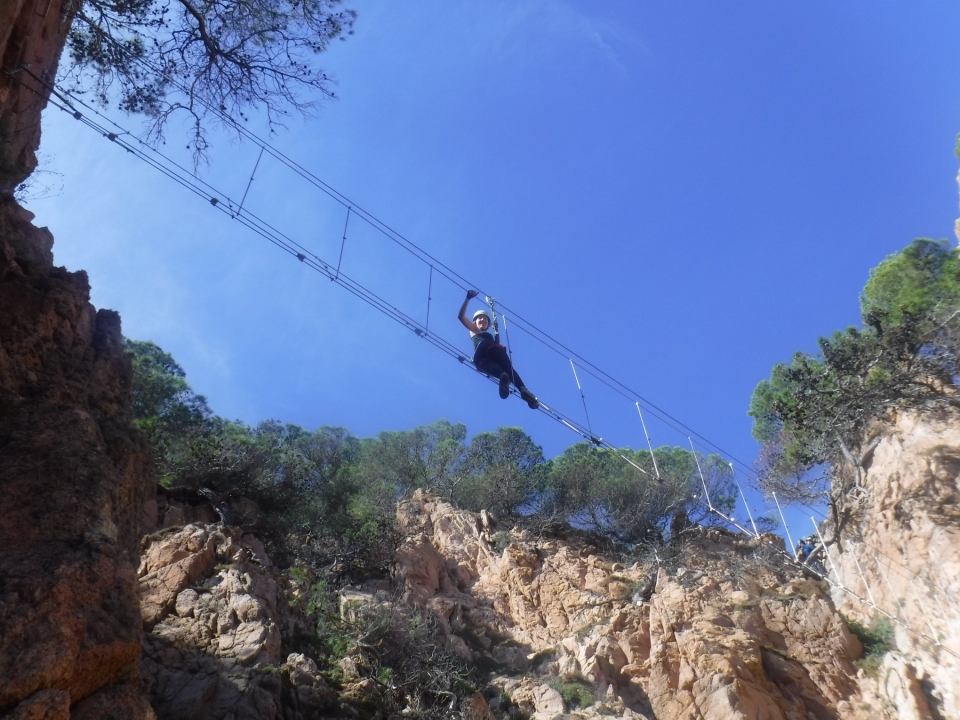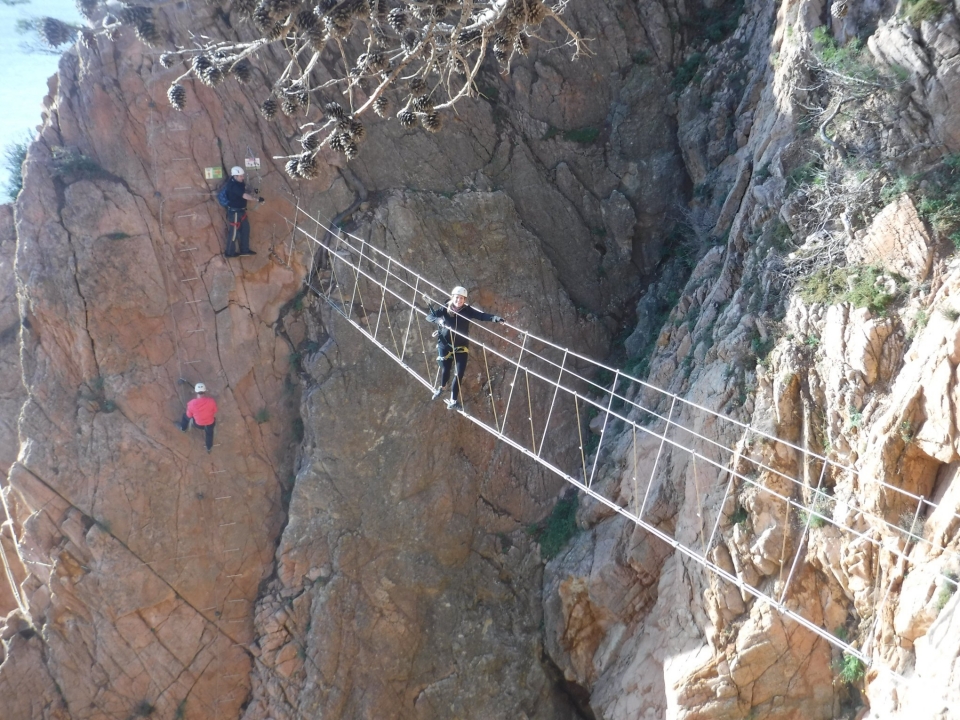
If you're a regular on via ferratas, or simply a height enthusiast who conquers every aerial circuit, you've likely crossed a Tibetan bridge before - but could you explain exactly what it is?
More than just a construction bridging two points, a Tibetan bridge embodies all the elements of a capital-A Adventure: balance, height, difficulty (to varying degrees), technique...
The Tibetan bridge consists of three ropes forming an inverted triangle. Two parallel ropes at chest height provide "comfortable" handholds as you progress, while the third (the footboard) runs beneath for walking.
Its name comes from China's Tibet region, home to the world's highest mountain range including Everest at 4,500 metres altitude. Undoubtedly, if there's one place to find the most spectacular Tibetan bridges, this is it. Their invention, like many things, stemmed from necessity - connecting mountain settlements.
Also called monkey bridges, these crossings frequently appear in via ferratas, though they originated as solutions for overcoming geographical obstacles. They're always traversed using a carefully designed safety system of harnesses and ropes, secured to the bridge itself by your accompanying sports technician.
The longest Tibetan bridge in Spain features in La Hermida via ferrata in Cantabria's Peñarrubia municipality, near towns like Potes or San Vicente de la Barquera. But it's not alone - incredible via ferratas with Tibetan bridges exist throughout inland and coastal areas of the Iberian Peninsula. Don't believe us? Just browse the via ferratas you can experience with our country's top experts here.












